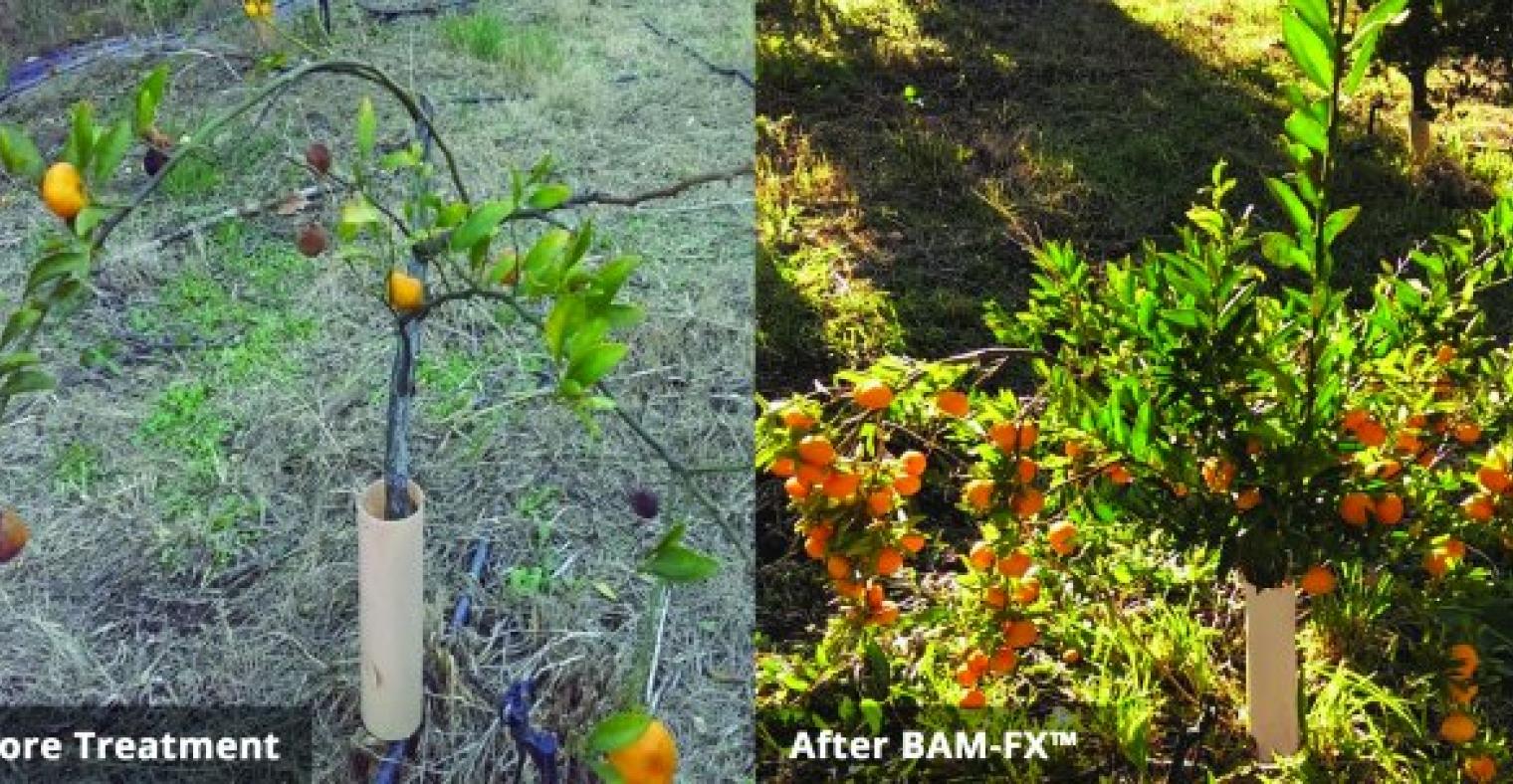STARTUP PROFILE - BAM: Formula for Farming in Space Offered to Earthly Growers
Posted on March 08, 2017 16:56 PM by sthara
If you watched the 2015 movie “The Martian” with Matt Damon stranded on Mars and having to figure out a way to grow food, you have the necessary information to understand the background story for BAM Agricultural Solutions.
Glenn Stinebaugh, chief executive officer of the Boca Raton, FL, based firm and a veteran in the plant nutrition business, cannot contain his excitement when discussing BAM-FX, the flagship product for the firm. He notes, as does the firm’s website, that BAM-FX “represents a disruptive technology that no other company can offer and has shown the ability to increase growth, yield, food quality and the efficiencies of fertilizer use.” He says the BAM-FX technology enables the efficient uptake of its perfectly paired 7 percent zinc and 2 percent copper minerals directly into the cells of plants.
Stinebaugh credits John Wayne Kennedy for the invention of the formulation, which he did under a contract with NASA, the National Aeronautics and Space Administration. He explained that for deep space exploration—like the real Mars trip that is planned for several years down the road—NASA needs to develop a way to feed its astronauts. There just isn't sufficient room to bring on board the amount of food that would be necessary for a mission that lasts several years. And even if that was possible, it would be extremely difficult to bring aboard the right type of food. Instead, there needs to be methods to grow that food in an accelerated manner.
Hence, NASA began working with Kennedy and in fact, BAM Agricultural Solutions, as a Space Act agreement contractor according to Stinebaugh. BAM stands for “bio available materials” and the CEO says Kennedy has perfected a formulation that works. It produces healthy plants that grow faster and produce higher yields.
Stinebaugh waxes poetic about the formulation and talks non-stop about “the new science” and the “new molecules” that it contains. He speaks of the “highly charged” zinc and notes that it is the positive charge of the molecule that makes the difference. Stinebaugh says plants naturally have a negative charge and BAM-FX utilizes its positive charge in an “opposites attract” kind of way to maximize plant utilization. The product, he says is attracted to every part of the plant and leaf stimulating growth. For the science-challenged, the important facts are that the firm has been testing it coast to coast on a myriad of agricultural products and has mountains of data and “white papers” attesting to its efficacy. He said it acts as a “soil stimulant” and that the key factor is that the formulation is very efficiently taken in by the plant creating a great environment for increased growth. “No other product out there does what this product can do,” he repeats often throughout the interview. “It is the positive charge that makes the difference.”
And then again, he touts the advantages of BAM-FX: faster growth, improved tolerances, greater yield, more nutrients in the fruit or vegetable that results. Specifically, he said great results have been documented on avocados, many different row crops, and strawberries. For strawberries specifically, Stinebaugh said increased yields, an uptick in brix numbers and the ability to produce greater yields with less water were the results of trialing. In citrus, it has shown efficacy in dealing with citrus greening, and has improved the performance of many different crops when dealing with environmental stresses such as drought.
The BAM executive said that after several years of trials, the firm is in hard sales mode. “We will still work with growers on trials but this product is ready to sell.”
He said in presenting to growers, “I like to understand what problems they are having and what issues they are trying to solve.”
He said in Ohio, for example, many issues surrounding nitrogen are top of mind for growers, while in California soil degradation, lack of water and a decrease in nutrient content are often mentioned by the firm’s customers. He said trials in California have shown that use of BAM-FX can potentially reduce water use by 25 percent because the product promotes root growth which better utilizes the water available.
“We have demonstrated the value of this product in many different places and on many different crops,” Stinebaugh said. “Now is the time to work with growers and move forward on sales.”
Again, he said BAM is not opposed to trialing in some circumstances but it also has customers moving forward with commercial applications. For example, he said a trial on a rice crop last year had very favorable results and there is no need to continue the trial this year.
Editor's Note: This article was featured in WG&S Magzine in August 2016.


